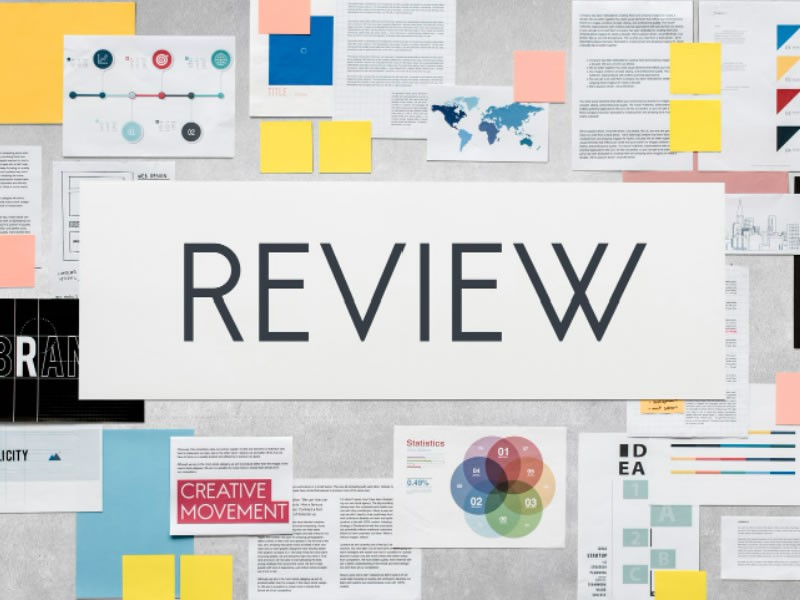Insight Blog
Agility’s perspectives on transforming the employee's experience throughout remote transformation using connected enterprise tools.
5 minutes reading time
(911 words)
4 Ways To Maximize The Learning Impact in The Workplace
To maximize the impact of learning, you need to bring a cultural shift. To do so, you also need thoughtful and curious employees genuinely interested in upskilling. This shift in cultural commitment will give your sustainable results.
Upskilling and reskilling are only necessary to thrive in today's era. One way to do this is to stay up-to-date with the current trends in your domain and organize training videos and workshops from time to time. To back this statement, 76% of employees say that a company would be more appealing if it offered additional skills training to the staff. However, that is not enough to match the dynamic needs of the industry.
To maximize the impact of learning, you need to bring a cultural shift. To do so, you also need thoughtful and curious employees genuinely interested in upskilling. This shift in cultural commitment will give your sustainable results.
This article enlists four ways to increase the impact of learning in your workplace.
- Use software to create training videos
When working toward upskilling the organization, ensure to level up how you give training. One way to do so is to use software to create training videos. It offers numerous advantages over conventional methods. Below are a few reasons software is commonly used to create training videos.
- Video creation tools have user-friendly interfaces that make it easy for varying users, even those who need to be tech-savvy.
- It enables you to customize your training videos as per your needs so that you can choose from several themes, templates and styles that match your branding style.
- It's time-saving and streamlines the process with drag-and-drop functionality and editing features.
- It lets you create training videos that can be duplicated and distributed to many learners.
- Many video creation tools also have data analytics features that enable video engagement and completion rates.
Also, using software to create training videos is a cost-effective, efficient and customizable solution which only enhances the learners' engagement and makes the overall training more effective and accessible. So if you aren't already using such software, it's time.
2.Use a holistic approach to enhance employee performance
Organizing training programs is only the first step. For a long-lasting impact, you need enablers in action.
So instead of focusing on organizing frequent training programs, take a holistic learning and performance approach that touches employees at varying points in their learning journey. For instance, employee A might benefit from a Digital Marketing course for beginners while employee B will benefit from an advanced course.
Consider to integrate the following elements for a holistic approach:
- Ask employees what they want to learn.
- Offer practice to let employees gain further expertise in the given domain.
- Help employees implement the learned skills
- Keep the engaged and motivated
- Allow ongoing connections after completion of the training session.
Once you have a survey of which employees want to learn which domain, it gets easier for you to organize relevant training sessions at regular time intervals. Also identify the right evaluation model that's required for training.
3.Listen to the employees
While the focal point of conducting training sessions and fostering a learning culture, don't forget to consider the learners' views about the same. The learners are everyone taking up courses. Their sentiments and interests are crucial to designing engaging learning programs. Measure employee engagement to know their interests. This way, you listen to the learners and curate courses, keeping them at the core.
Doing so will help you:
- Learn about the learner's expectations and intent.
- Build programs that the employees/learners will be enthusiastic about.
- Recognize the root causes that hold the learners back from completing the courses.
- Uncover the gap between learners' expectations and training programs.
4.Conduct skill gap assessment
No matter how many training sessions you conduct, it's futile if it's not benefiting the employees.
To not let that happen, it's vital to conduct a skill gap assessment before organizing training sessions. The evolution in resources and technology continues to widen the gap between the skills employees possess and the ones that the job role needs.
For example, one employee may not know about digital marketing, while another may know all about it. In such cases, you need to find the missing skills and the proficiency level of the existing skills. It gives you an accurate picture of the desired future state and current skills, intending to identify essential gaps that may affect the employee's performance and overall business bottom line.
Conduct a skill gap assessment by following the below-mentioned points:
- Prepare and share a skill score to evaluate each employee's proficiency level
- Create such a skill score sheet for each department
- Include managers and peers to identify the skill score
- Prepare a list of missing skills and the existing ones that may need your attention
Ensure to conduct a skill gap assessment before the training sessions and after. Doing so will continue to inform you about the proficiency of every employee in the desired skill.
Time to maximize learning impact in your workplace
Learning and upskilling are never limited to only boosting employee performance and productivity. It enhances the overall experience of the employees. However, when you want to better the impact of learning, you must establish the learning culture across all segments of your organization. From the development team to sales and marketing people to the accounts team, such experiences must be across the board.
Take small steps toward delivering learning experiences. Gradually, it'll bring a cultural shift in the organization. Also, hire employees who are eager to learn as it'll only aid in achieving the result faster.
Remember to make learning fun and engaging!
Categories
Blog
(2590)
Business Management
(318)
Employee Engagement
(204)
Digital Transformation
(172)
Intranets
(119)
Growth
(118)
Remote Work
(61)
Sales
(48)
Collaboration
(37)
Culture
(29)
Project management
(29)
Customer Experience
(26)
Knowledge Management
(21)
Leadership
(20)
Comparisons
(5)
Ready to learn more? 👍
One platform to optimize, manage and track all of your teams. Your new digital workplace is a click away. 🚀
Free for 14 days, no credit card required.













